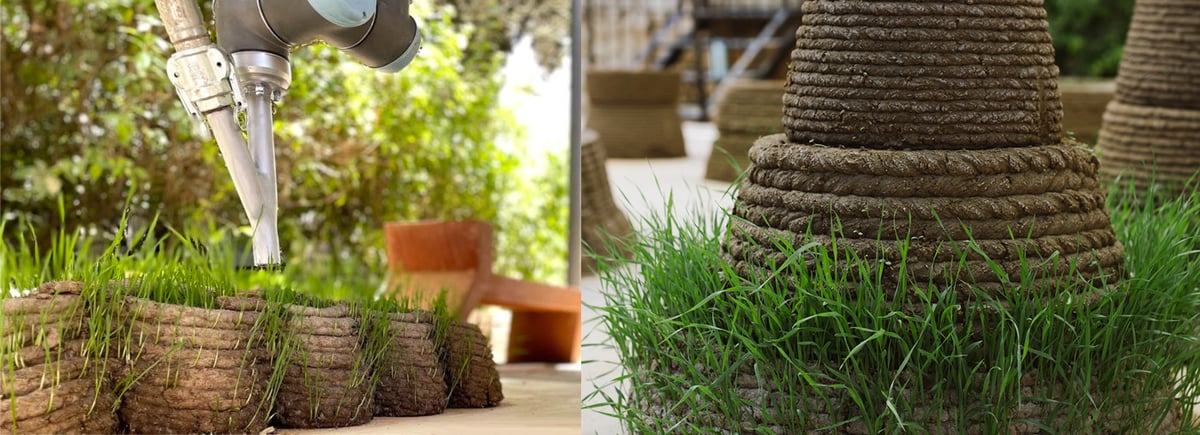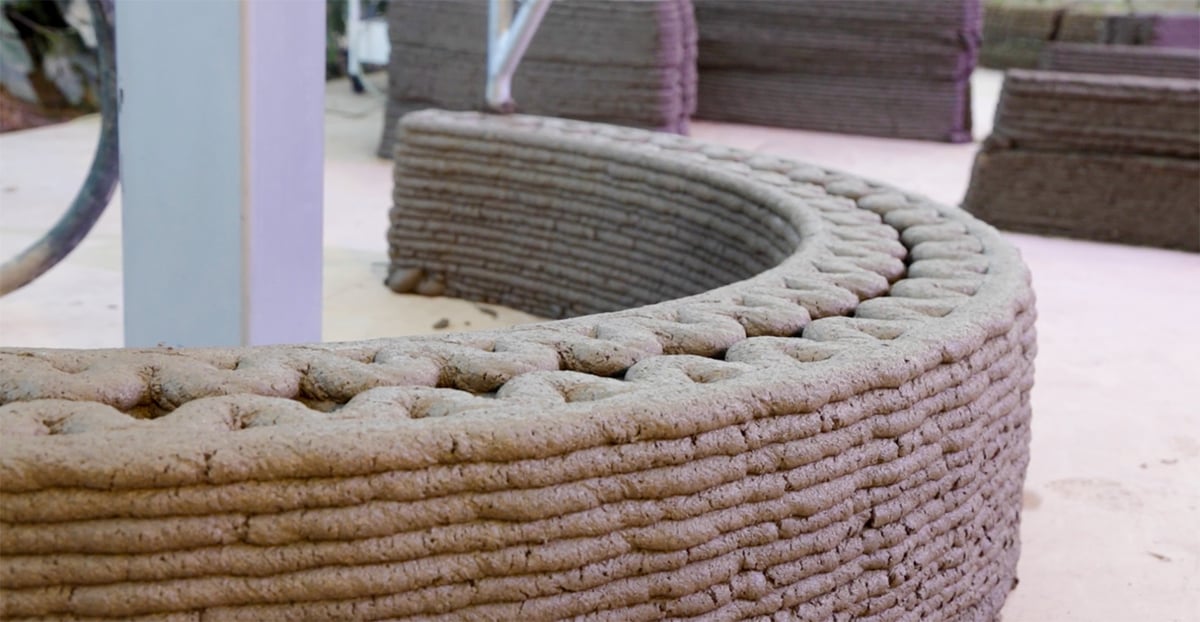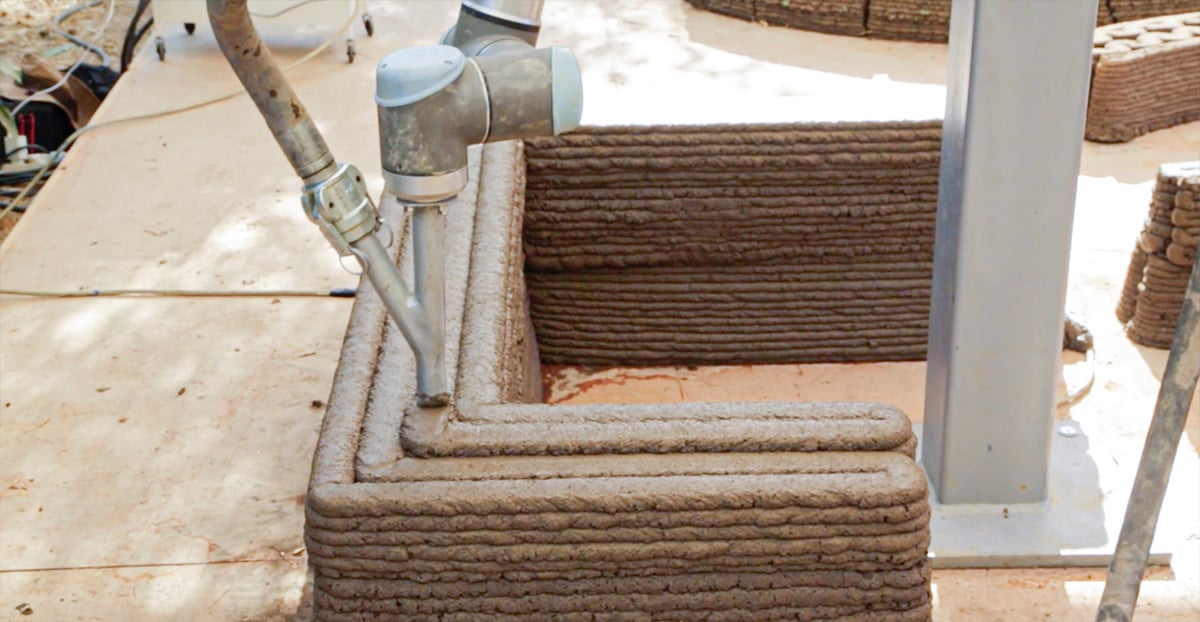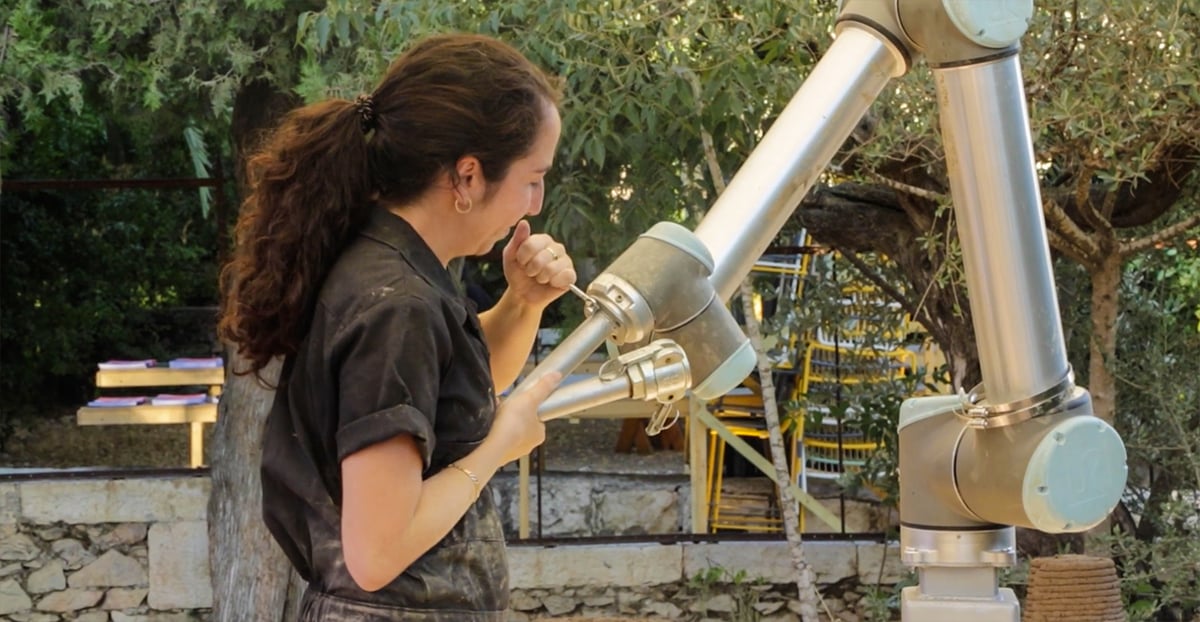Imagine, instead of buying a plastic pot for your garden then filling it with soil (which you purchased in a large plastic bag) and planting a flower (which you removed from its flimsy plastic container), you had a pot made of earth that would simply bloom when watered. No plastic involved.
This is one of the ideas behind a recent project that used a 3D printer to extrude mud infused with seeds. The 3D printed earth containers, towers, and walls are only the beginning, says the group of young designers behind the project. 3D printed buildings are the ultimate goal.

The concept instillation, called To Grow A Building, debuted at the Jerusalem Design Week in June where ephemerality, or the concept of things existing only briefly, was the theme.
Buildings, of course, are rarely constructed to be temporary, but the concept does have wide application potential across a number of markets. The designers envision a world where “buildings will germinate, bloom, wither, produce new kinds of material, and finally return to the same soil from which they emerged.”

Some Will Build Buildings, Others Will Grow Them
Instead of buildings and structures made of wood, concrete, or steel, the project suggests an architecture that uses soil and roots as structural elements. Local soil would eliminate the need to purchase, source, or ship materials and ensure that the structure could simply degrade into the landscape when its time is up.
The roots of native plants would secure the soil leading to months or even years of structural stability, given the right maintenance.
3D printed home construction out of native soil isn’t a completely new concept. 3D printing company WASP debuted the Tecla project in 2016, which used soil mixed with fibers from rice husks and a binder. The To Grow A Building project, however, couples 3D printing structures with foliage and ephemeral quality. This new approach integrates flora into the design and fabrication process with a novel material for 3D printing.
On a technical level, the project used a robotic arm 3D printer equipped with an extrusion nozzle and controlled with software, not unlike today’s concrete 3D printers used by a growing number of construction companies to build homes and buildings around the world.

Extruding a material composed of seeds and soil didn’t fit the specs of existing construction 3D printers to the project coordinators needed to improvise. They custom-made a machine that could build, layer by layer, using material that’s more fluid than typical 3D printing materials.
After printing, the structure receives a life of its own: the seeds sprout, the walls become a green facade, while on the inside they fill with roots, a new and strong material in itself.
The project was supported by Rogovin, a company that promotes ecological innovation in real estate. And while To Grow a Building may have limited applications in today’s home construction market, it may represent a great opportunity to rethink products such as gardening pots, temporary walls around outdoor events and construction sites, or even urban gardens.
To Grow a Building is a project conceived and executed by designers Or Naim, Elisheva Gillis, Gitit Linker, Danny Freedman, Noa Zermati, Adi Segal, Rebeca Partook and Nof Nathansohn, with the help of Shai Keselbrener , Oneg Yehuda Altshuler, Thai Zahavy, and Avichay Kadosh.

License: The text of "3D Printed Mud Walls & Pots That Sprout" by All3DP Pro is licensed under a Creative Commons Attribution 4.0 International License.
